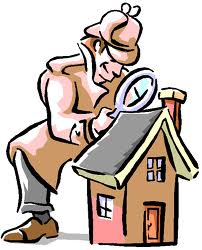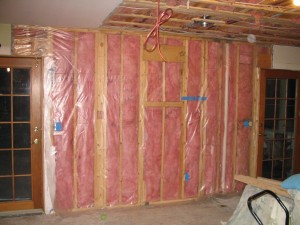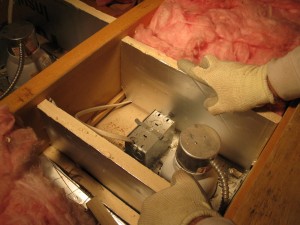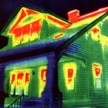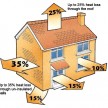Home Energy Audit
Energy Audit Shows Problem Areas:
A home energy audit is used to assess how much energy your home consumes and to evaluate what measures you can take to make your home more energy efficient.
An audit will show you problem areas in your home. These areas, if corrected, can save you hundred of dollars in heating and cooling savings over time.
Utility Company Audit:
Most electrical companies periodically have grant programs that provide free energy audits. There are also professional companies that do a much more thorough audit by using blower doors and infrared cameras.
A professional auditor uses a variety of techniques and equipment to determine the energy efficiency of a structure.
Do-I-Yourself Home Energy Audit:
Walking though each room of your house and making note of deficiencies or problems is a great first step to completing your own energy audit.
My suggestion is to focus on the “low hanging fruit” that provide the most yield in savings. These are large heat loss issues like adding insulation, storm windows or foaming air leaks.
Locating Air Leaks
First, look for the most obvious air leaks. The drafty door or window leaks.
Stopping these drafts have a potential savings that can range from 5% to 30% per year, and the the result is a house that feels warmer.
Check the following locations for air leaks:
- Electrical outlets – install rubber gasket.
- Switch plates- install rubber gasket.
- Window frames – install a new efficient window, storm window, insulate or caulk.
- Baseboards – caulk
- Weather stripping around doors – replace
- Fireplace dampers – close, purchase a insulating kit for fireplaces
- Attic hatches – insulate the hatch [see previous posts]
- Wall- or window-mounted air conditioners. – insulate, caulk.
- Seal around pipes and house wall penetrations.
Heat loss through the ceiling and walls in your home could be very large if the insulation levels are less than the recommended minimum.
If the attic hatch is located above a conditioned space, check to see if it is at least as heavily insulated as the attic, is weather stripped, and closes tightly.
In the attic, determine whether openings for items such as pipes, duct-work, bath fans, ceiling lights and chimneys are sealed.
Seal any gaps with an expanding foam caulk or some other permanent sealant. [see insulation posts on my side bar]
Heating/Cooling Equipment
As part of your home energy audit have a professional inspect heating and cooling equipment annually, or as recommended by the manufacturer.
If you have a forced-air furnace, check your filters and replace them as needed.
Generally, you should change them about once every month or two, especially during periods of high usage. Have a professional check and clean your equipment once a year.
If the unit is more than 15 years old, you should consider replacing your system with one of the newer, energy-efficient units. A new unit would greatly reduce your energy consumption, especially if the existing equipment is in poor condition.
Check your duct-work for dirt streaks, especially near seams. These indicate air leaks, and they should be sealed with a duct mastic or aluminum tape.
Insulate any ducts or pipes that travel through unheated spaces. An insulation R-Value of 6 is the recommended minimum.
Lighting
Lighting accounts for about 10% of your electric bill and should be considered in your home energy audit.
You should also consider installing compact fluorescent lamps for areas where lights are on for hours at a time. Your electric utility may offer rebates or other incentives for purchasing energy-efficient lamps.
IC rated recessed lights can be installed as well as insulation boxes built over them in attic spaces.



